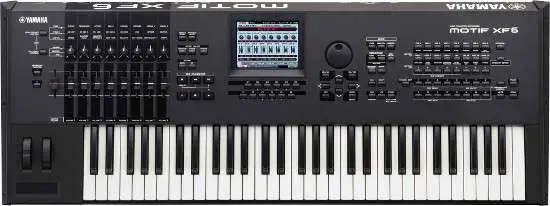
Analog synthesizer – for whom?
Having gained some insight into the market (or history) of synthesizers (or electronic music), you quickly find that most modern synthesizers are digital instruments. However, for some reason, there are a large number of virtual-analog synthesizers and real analog synthesizers on the market, and many musicians or fans of old electronic music claim that classic analog synthesizers sound better. How is it with them?
Digital books vs. Analogs
Digital synthesizers can sound bad or much more interesting than analogs. Much depends on the specific model and the settings that the user will use. In general, digital synthesizers are more versatile, flexible and offer a lot of possibilities to modify settings or load presets or even sound samples from the computer. On the other hand, sample-based digital synthesizers are very advanced, but still players, of already produced sound.
Virtual-analog synthesizers, on the other hand, are analog synthesis simulators. They provide greater polyphony and allow the creation of various connections between oscillators and filters, which in an analog synthesizer are predetermined by the architecture of a specific model, or have limited connectivity with each other. This makes virtual-analog synthesizers less individual. They are more universal. Does that mean better? Not necessarily.
A virtual-analog synthesizer can sound better or worse, depending on the components used, and can mimic the nature of different analog synthesizer models. However, if the sound is not to be sterile, clean, stable, laboratory-like, but more lively and with “own soul”, achieving this effect requires a certain skill in setting up the synthesizer and, if necessary, the use of certain built-in effects. However, for a synthesizer, audiophiles believe that such a sound still lacks a certain life, a breath, and that it is not as real to some extent unpredictable as the sound of an analog synthesizer. Where is it coming from?

Real and simulated world
A simulator is a good term for a virtual-analog synthesizer. Even the most perfect simulator presents reality in a simplified way. It is like the theory it is based on. Each theory looks at the world only through a certain aspect that interests its creator. Even if it is to be as wide as possible, it cannot cover all the details, because the whole reality cannot be accurately measured, weighed or observed. Even if it were possible, no human would be able to process all the information. It is similar with synthesizers. VA synthesizers quite closely mimic the processes taking place in analogues, but they do not do it (at least yet) fully.
An analog synthesizer produces sound by circulating current through circuits and transducers. Inaccurate setting of the knob, minor, unpredictable changes in voltage, temperature changes – everything affects its operation and thus the sound, which in its own way results from the complex, real conditions in which the instrument works.

Since virtual-analog synthesizers are not a perfect analog synthesizer simulator, why not use VST plugins if I can’t afford analog synthesizers?
VST plug-ins are a very versatile and cost-effective tool that can enrich your instruments a lot, without having to spend thousands of zlotys. for the next synthesizers. However, it is worth bearing in mind two problems that arise from their use.
First, VST synthesizers work in the computer and must be controlled using the monitor and the mouse. It is true that some functions can be controlled by separate consoles or knobs built into MIDI keyboards. However, this will require spending time on setting up the software, and due to the number of functions, in practice the user is often forced to look at the monitor and wave the mouse. It is tiring, slow and inconvenient. With a live instrument in front of you, you can play with one hand and quickly modify various parameters with the other. It speeds up the work and is also useful on the stage, where the trained use of the hardware synthesizer allows for better, more interesting performances and simply looks better.
Second, hardware synths have more character. And it’s not just about looks. Each hardware synthesizer has its own software, its own synthesis engine, its own filters and sockets, which together give the sound some individual sound. In the case of VST, the same computer is responsible for each instrument, which makes all the synthesizers sound similar to each other, the whole blending together, losing complexity, and simply sounding less interesting.
Comments
Tomasz, why?
Piotr
I like your articles a lot, but this is the third one in a row that makes me want to stop playing music. Regards
Tomasz





